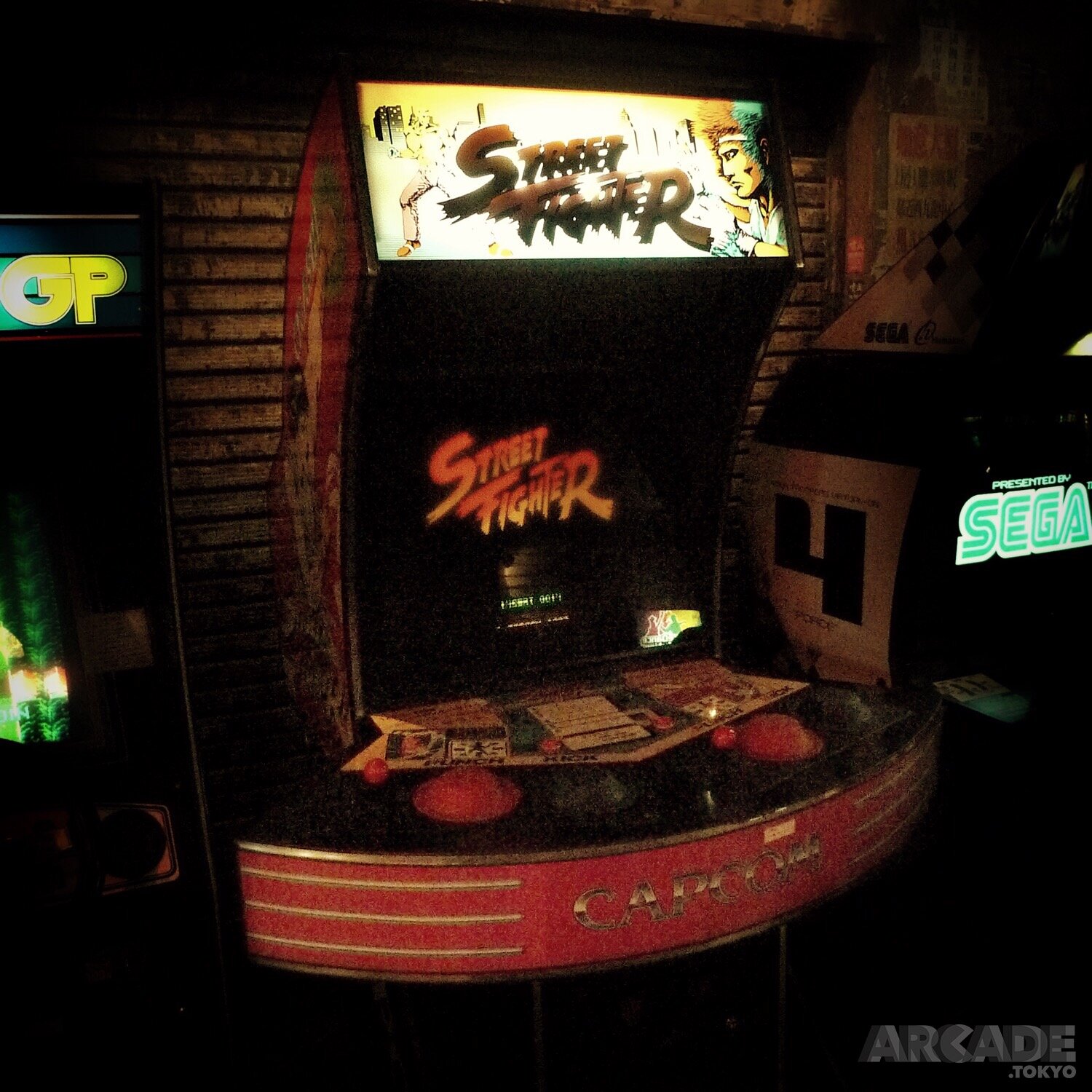Warehouse Games: The First Street Fighter

On 17 November 2019, Warehouse Kawasaki will close down.
In tribute, Arcade Tokyo is running a series of posts about this legendary arcade and its games. This third post covers the original 1987 punchable Street Fighter cabinet – an amazing first chapter in the history of Street Fighter controls.
This beautiful classic cabinet sat in Warehouse’s retro corner and didn’t even stand out, so illustrious was its company.
- - -
Street Fighter, as we know it now, depends on fast, consistent, unequivocal controls. Although it’s true that part of good Street Fighting is the ability to physically input the right sequences, that’s really one of the basics, and the controller should be getting out of the way of that task, letting you focus on tactics and timing. That’s why the aeroplane-seatback-TV-remote version I once played sucked so badly: you shouldn’t mess lightly with the fast and familiar stick-and-six. The Mega Drive even recruited a new controller so as not to inconvenience its VIP guest in 1993: Street Fighter II: Special Champion Edition.
The state my pictures are in now :(
So it’s interesting that the original Street Fighter deluxe cabinet from 1987 looked like the above. Since I’ve managed to lose all my best pictures of this wonderful thing, I gratefully found that one linked from this interesting discussion thread.
The interesting part of this cabinet, which seems to be referred to around the web as the “deluxe” one, is that instead of the now-usual six-button arrangement for light, medium, and strong varieties of kick and punch, you have just one button for punching and one for kicking. And why are whose buttons so massive? Is this like Dekarisu, somehow engaging through the simple physicality of gigantism? It’s more than that.
Those big buttons are soft rubber cups, squashable beneath a clenched fist or open palm, and they cover a giant round button with a long travel. Hit the button harder; hit your opponent harder.
A very helpful image linked from the same forum thread. Looks like a cooker top. Source
According to Wikipedia, the cabinet actually translates the depression of the button into an analogue value. It’s not clear if that’s then translated into a light, medium, or strong category for the in-game attack, or if it actually delivers more fine-grained variable damage. The latter would be quite remarkable, especially considering that the standard, non-deluxe SF cab was a six-button candy, so there was no room for any such fine variation there. So we’ll assume each press gets put into one of the three strength categories.
Owing to the cabinet damage that results when you encourage people to hit things as hard as they can, the rubber-button cabinet was apparently replaced or avoided altogether by some arcade operators in favour of the standard variant. So the deluxe cabinet would probably have always been something of a rarity, even before it turned out to be a freak diversion in the history of Street Fighter controls that went on to be written over the following few decades.
So is it good?
First you may want know, am I a Street Fighter expert? Well, I think I may have played this first game once before —the Amstrad version at a friend’s house. However, much more clearly than the game, I remember that his dad smoked cigars because he had given up cigarettes, that he was permitted to smoke them only in the downstairs lavatory, and, most clearly of all, the stale and sickening smoke-stench humming from the thick, burgundy carpet of his downstairs lavatory. So am I an expert? You decide.
I played so poorly on this arcade cabinet that I couldn’t even tell you with any degree of confidence whether it was working properly. Had it been SF2, perhaps I would have at least known how badly I was doing, but as it was, I couldn’t even win a round. It was pretty fun to push the big squishy buttons, and, as ever, a second player would certainly have made it more fun. So, for me, it was a curiosity but nothing more.
Now that Warehouse Kawasaki is closing down, I don’t know where you can see one of these cabs. So if you ever find one, please know you’re very lucky and take your chance to at least press the buttons and feel it. Not sure I can condone actually hitting the poor thing though.
Since, the game itself has been trampled into the depths of history by many years of obsessive refinement, I don’t feel sad not to play it again. I just feel privileged to know the feel of weak-medium-strong as Capcom originally intended.
Photographer and writer covering Tokyo arcade life – the videogames, the metropolis and the people










